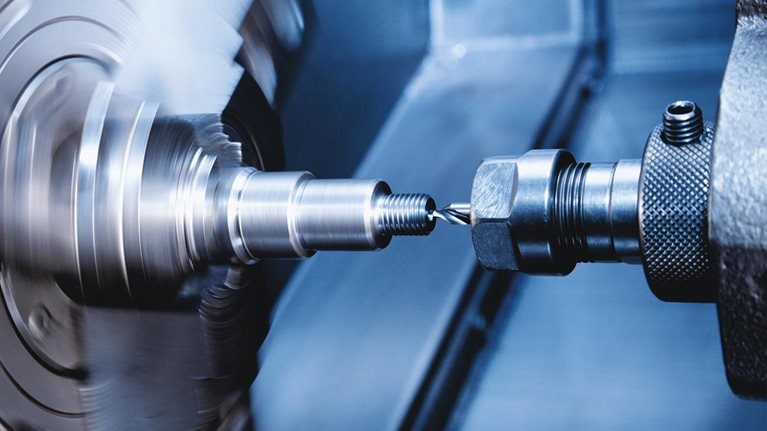Manufacturers of highly advanced, complex equipment—such as aerospace and defense (A&D) companies or heavy-equipment OEMs—face a recurring challenge. Their products have extremely long life cycles of 30 years or more, during which they need to provide legacy-parts support. But the internal components for those systems, including semiconductors, electronic boards, and mechanical parts, have much shorter life cycles, in some cases less than five years. Because of this disparity—what we call the “two speed” challenge—components can become harder to source over time and even grow obsolete as suppliers struggle to source the raw materials or stop manufacturing them altogether.
As a result, OEMs must design replacements for those obsolete components and face nonrecurring engineering costs as a result. We estimate that aggregate obsolescence-related nonrecurring costs1 for the military aircraft segment alone are in the range of $50 billion to $70 billion. This estimate is based on an in-depth model that accounts for aircraft category, generation, and projected remaining in-service years, thus providing an estimate of the number of obsolescence cycles and related costs. The problem of nonrecurring engineering costs is growing worse as technology cycles accelerate and supply chains become more interconnected.
However, a proactive and systematic approach can help OEMs address obsolescence-related nonrecurring costs in their entirety. Specifically, companies can follow three essential steps to reduce the nonrecurring engineering costs for obsolete components. They can also become more proactive about addressing component issues before components become obsolete. Together, these actions can reduce overall costs of obsolescence management by up to 35 percent in just a few months.
The two-speed challenge is growing, but there is a clear opportunity for companies to take decisive measures to address it, leading to improved financial performance and a better customer experience.
Cascading implications across the business
For industrial OEMs (such as A&D companies), heavy-equipment manufacturers, and other producers of highly advanced, complex equipment, the two-speed challenge between life cycles for overall systems and for internal components can have implications across multiple functions:
- Operations. When components such as memories or microprocessors are discontinued or not available anymore in the market, OEMs need to redesign electronic systems around new components, frequently requiring an entirely new supply chain, often in a short time frame.
- Inventory management. If a product requires a redesign due to obsolescence, many components currently in inventory will no longer be usable and thus get delegated to nonmoving inventory—and likely scrapped.
- Commercial. Due to engineering requirements and qualification activities, designing a new component entails nonrecurring costs, which then get cascaded down to the end customer, resulting in products that are less affordable and thus less competitive in the market.
- Service. Once a component is discontinued, OEMs will no longer be able to provide it as a spare part. That increases both the cost and complexity of aftermarket service for OEMs, while also reducing customer satisfaction.
Moreover, the challenge is getting worse. Technology cycles are accelerating, meaning that internal components have a correspondingly shorter life cycle. In addition, the pandemic has highlighted supply chain constraints. In the short term, the world is experiencing a scarcity of semiconductor components and increased raw-material costs. Once the pandemic ends, however, complex and interconnected supply chains will still remain, and companies will need the means to ensure a reliable supply of components for the long term.
The ongoing war for talent adds another dimension to the challenge. Many industries—particularly A&D—face increasingly scarce engineering resources. Proactively addressing obsolescence challenges helps companies ensure that their best people can focus on the value-adding work of designing innovative new products and services, rather than pulling them away to respond to component shortages.
A three-step approach once components become obsolete
Since the problem is large and growing, companies need a systematic, structured approach to address obsolete components. McKinsey’s experience working with industrial companies points to three steps.
Step 1: Identify alternate suppliers for the component. The first step is to identify any potential alternate suppliers for a given component that faces obsolescence. This is the most attractive solution, as it avoids virtually all new engineering costs. A comprehensive scan of the market, with full engagement from the OEM, distributors, and brokers, can help companies track down component sources, identify those that do not require a redesign, and buy up all remaining units at a reasonable cost (in accordance with existing procurement rules).
Once components have been identified, each supplier must still undergo a screening process to verify its capabilities and qualifications. The screening includes validating process quality, anticounterfeit measures, parts traceability, and a supplier’s ability to export into key manufacturing regions such as the European Union and the United States. Once a supplier has been selected, OEMs should validate stock availability for each supplier and component.
Step 2: Identify alternative components that can be modified. The second step is to find a similar component in the market—one that is close in fit, form, and function (FFF) to the component becoming obsolete—and then modify it as needed. This step allows companies to minimize nonrecurring engineering costs and avoid a full redesign. For each component to be modified, OEMs need to determine the amount of redesign work required and then create a business case to understand the true financial impact of this step. Success requires looking at a broader universe of components and developing a detailed understanding of how they differ from the unit under consideration. To scan the market efficiently, companies can identify experts who can assess the availability of FFF components for specific technical areas and commodities (exhibit). (Notably, even after redesign, new parts will still need to be validated and qualified, though the costs will be lower than for a full redesign.)

Step 3: Redesign the component. The third option, in the event that no exact or FFF replacements are available, is to redesign a new component while minimizing costs and reducing any disruption to existing system design. Specific measures—such as conducting cross-functional, design-to-value workshops for the components under consideration and involving design experts and cost engineers early in the process—can reduce the process’s time, cost, and complexity.
Proactive obsolescence management before issues emerge
The three steps outlined above are an effective and practical way to address obsolescence issues once they have emerged, but OEMs can also proactively identify—and mitigate—potential obsolescence issues before they arise. The following measures should be priorities.
Implement obsolescence best practices. First, companies can develop a new modus operandi that continually scans for potential obsolescence issues. A dedicated, cross-functional team should be assembled—with representation from the procurement, R&D, manufacturing, and quality functions—and tasked with developing a set of lead indicators to assess components, identify near-term issues, and develop countermeasures. For example, companies can allocate a budget specifically for resolving obsolescence issues and launch processes to make strategic last-time buys of all potential components at risk of obsolescence.
Apply dedicated tools. Because complex systems can have thousands of subcomponents, companies would benefit from having the means to track highly granular obsolescence information on a system-wide or enterprise-wide level. Advanced tools are available that can consolidate internal information from OEMs with external market-based data, generating a single, integrated view of components that are obsolete, alternative suppliers, potential FFF options, and the cost implications of various mitigation measures. The result is a significant increase in transparency, enabling companies to understand all future obsolescence issues and address them efficiently.
Create dedicated roles. Designating “obsolescence champions” in the organization can ensure that OEMs formally allocate responsibility for this issue to a single individual (or team) who can directly engage with suppliers to anticipate supply chain disruptions. Companies can also take concerted steps to improve capabilities through training and other initiatives. More broadly, linking incentives to supply chain performance encourages teams to adopt the right behaviors.
Factor potential obsolescence issues into R&D. Last, OEMs of advanced industrial products should factor component obsolescence into the design of new offerings by identifying and addressing root causes in cooperation with engineering units, suppliers, and other stakeholders. This will require developing joint technology road maps, adopting standardized interfaces, applying modular designs, using common designs among different products (where possible), and minimizing the number of highly specialized components.
Obsolescence management is increasingly important for OEMs of low-volume, high-complexity products. Organizations that continue to ignore this challenge will likely face ongoing issues in operations, marketing and sales, finance, and aftermarket services, potentially leading to higher costs, fewer commercial opportunities, and reduced customer satisfaction. Conversely, those that take a proactive, systematic approach—to address currently obsolete components and those that could soon become so—can generate corresponding gains in performance.


